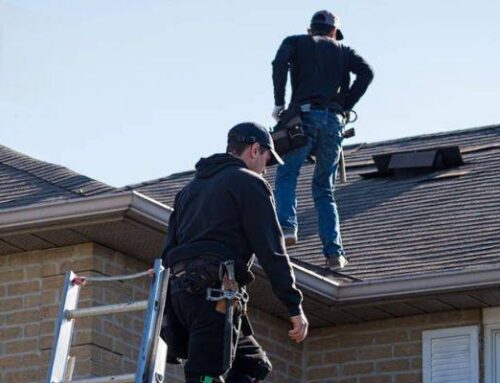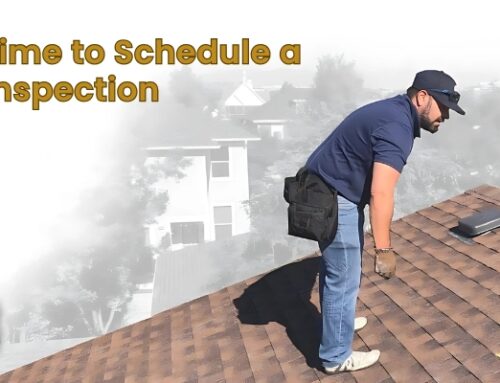The roofing industry has changed from thatched roofs to the most advanced technology. Innovation, environmental awareness, and a drive toward higher efficiency and safety all help feed today’s rapid evolution. Exploring current trends, this article delves into the latest in residential roofing designs and technology, showcasing the industry’s remarkable progress.
Cutting-edge technology is getting into adaptive roofing materials, which fortifies buildings. This is in line with overall environmental objectives. New technologies to keep track of include those applying to adaptive and responsive materials in the construction industry for a greener environment. Below are some of the latest residential roofing trends to look out for:
1. Cool Roofing Technology
Adding reflective materials to asphalt and metal roofing systems greatly improves energy efficiency, and is particularly useful in Minnesota’s varied climates. This integration of strategy controls the temperatures inside buildings by reducing their absorption of heat, cutting down the amount of energy used to heat and cool.
Additionally, the reflective nature of these materials gives buildings an increased ability to resist the onslaught of extreme weather and uses much less energy to begin with. Thus, they are more effective in terms of both energy conservation and environmental sustainability. Such an innovative approach improves the overall performance of roofing systems.
2. Solar-ready Designs
The increasingly sophisticated integration of solar panels into roof surfaces indicates an evolution toward sustainable energy. This trend reflects an increasing emphasis on integrating aesthetic and functional elements so that solar technology becomes as much a part of architecture as any other building material.
So, by integrating solar panels with roofing materials, it becomes easier for this transition on a visual and logical level. In the end, the solar panel on the roof eliminates obstacles to green energy.
3. Green Roofing Solutions
The current rise in awareness is generating a heightened awareness for ecologically sound choices in roofing materials, including green roofs or vegetative roofing systems. Energy-saving windows have become more common in residential construction as homeowners look for better insulation and environmental benefits.
Nowadays, homeowners are more willing to accept green ideas that improve insulation and have beneficial side effects for the environment. This increasing interest in greener roofing options is indicative of a trend toward a more environmentally friendly and environmentally responsible attitude toward building practices.
4. Smart Roofing Systems
Energy efficiency and early identification of possible problems are achieved by adding smart technologies to monitor and control the roofing environment. This integration includes advanced monitoring systems that function to smooth out the regulation of several roofing factors.
Through smart technologies like sensors and automation, the roofing environment becomes more flexible and responsive. This is conducive to rationalizing energy consumption. Ultimately, these smart solutions make such roofing places more sustainable and resilient, which is in keeping with enhanced performance longevity and breakthroughs in technology.
5. 3D Printing in Roofing
Becoming the cutting edge of manufacturing in the 21st century, 3D printers emphasize flexibility, speed, and low waste. They are widely integrated into different areas, with the roofing industry being an example. With help from computer-aided design (CAD) technology, residential builders are now using 3D printing for materials other than roofs.
The innovative approach also includes designing breakthroughs in roofing technology such as eco-friendly green roofs. The apparent benefits point the way toward full integration with standard construction methods through the joint efforts of commercial and governmental innovators.
6. Storm Resistant Designs
In the face of Minnesota’s extreme weather, there is a greater effort aimed at designing roofs that are tougher and more stable. Their designs are intended to provide exceptional protection against storms and harsh climates, allowing buildings to remain structurally sound in the face of violent weather.
Building robust, weather-proof roofs not only increases the lifespan of residential buildings but symbolizes an effort to protect both residents and their homes from the ravages of severe weather. It also marks the beginning of building strength in Minnesota’s architectural environment.
7. Metal Roofing Innovations
New developments in metal roofing materials include perfected metal coatings and arched designs that help increase both strength and beautiful appeal. These upgrades signify the development of roofing technology. Alongside giving a building better protection from the elements, they also add enormously to its aesthetic appearance.
In this way, while metal roofs can weather the most severe weather conditions, they can also give buildings an elegant touch. This path of development of metal roofing materials reflects the confluence of functionality and design, providing a complete solution for owners of property looking for long-term, aesthetic roofing.
8. Self-cleaning and Self-healing Roof
Self-healing shingles provide a contemporary answer to the two major problems of the asphalt roof. Although the regular shingle provides affordability and appeal, it is vulnerable to weather and problems with mildew and maintenance, with granule loss the greatest of these problems.
Thermoplastics are the raw materials for self-healing shingles. These inventive materials allow the shingles to self-heal fine scratches. Under the action of the sun, the thermoplastics split apart. The molecules form new molecular bonds on being cooled, which seal up cracks, scuffs, and scratches without diminishing the material’s durability.
Conclusion
As homeowners emphasize energy efficiency and sustainability and demand for innovative materials becomes more significant, the roofing industry continues to rise to the challenge. This is noticeable with the latest products. Keeping pace with these trends, homes look good, and they are also built with the most cutting-edge technology for durability and performance.




